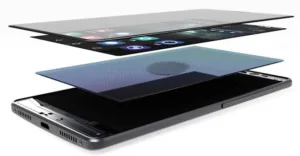Synaptics has announced a force-sensing touch screen controller which will offer Android device developers the opportunity to add a new touch screen user interface modality. The Synaptics announcement is timely since a similar user interface capability has been implemented in the Apple iPhone 6s and 6s Plus which began shipping on September 25 and include “3D Touch” as a new feature.

Apple describes 3D Touch stating, “iPhone 6s introduces an entirely new way to interact with your phone. For the ?rst time, iPhone senses how much pressure you apply to the display. In addition to familiar Multi?Touch gestures like Tap, Swipe, and Pinch, 3D Touch introduces Peek and Pop. This brings a new dimension of functionality to the iPhone experience.” The Apple iPhone 6s user interface also combines touch force sensing with haptics so that, “… when you use 3D Touch, your iPhone responds with subtle taps. So not only will you see what a press can do — you’ll feel it.”
We will have to wait a while longer for the release of Android devices incorporating force sensing touch sensors to evaluate the effectiveness of the user interface and guage user acceptance. However, Synaptics has described the user interface features enabled by the firm’s new controller. The list of force-sensing enabled user interface features include:
- Variable speed scrolling
- Picture zoom and panning
- Function preview and selection
- Continuously variable gaming control functions
- Unlock and wake up
- Right-side mouse click behavior (open contextual menus)
- Line thickness control while drawing (e.g. when writing Chinese characters and creating artwork)
- Image editing (brightness, contrast, saturation)
- Upper case and symbol selection (to bypass keyboard mode changes)
Synaptics says the new controller will enable user interface features including speed scrolling, zoom, gaming, and text or photo editing by applying variable force with a finger or stylus. Another user interface capability supported by the new Synaptics controller is “SideTouch” for edge gesturing such as scroll and tap. This SideTouch capability has been launched in the new Xiaomi Mi4c smartphone. In the new Xiaomi handset the side of the phone is used to track finger taps and slides enabling scrolling without covering the display with hands or fingers. (We showed the same concept in a video on a Sharp automotive display at SID Sharp Frees Auto Makers from the Tyranny of Rectangles – Man Ed)
Also recently, Huawei exhibited their Mate S smartphone (photo below) with “Pressure Sensitive Touch Technology” at IFA in September. (Huawei Beats Apple to Force Touch – subscription required)
Source: Huawei
This next generation of smartphones offering force-sensing touch screen displays is a significant advance in user interface capability but only time and usability testing will tell if the force-sensing touch screen approach is appreciated and valued by users. – Phil Wright

